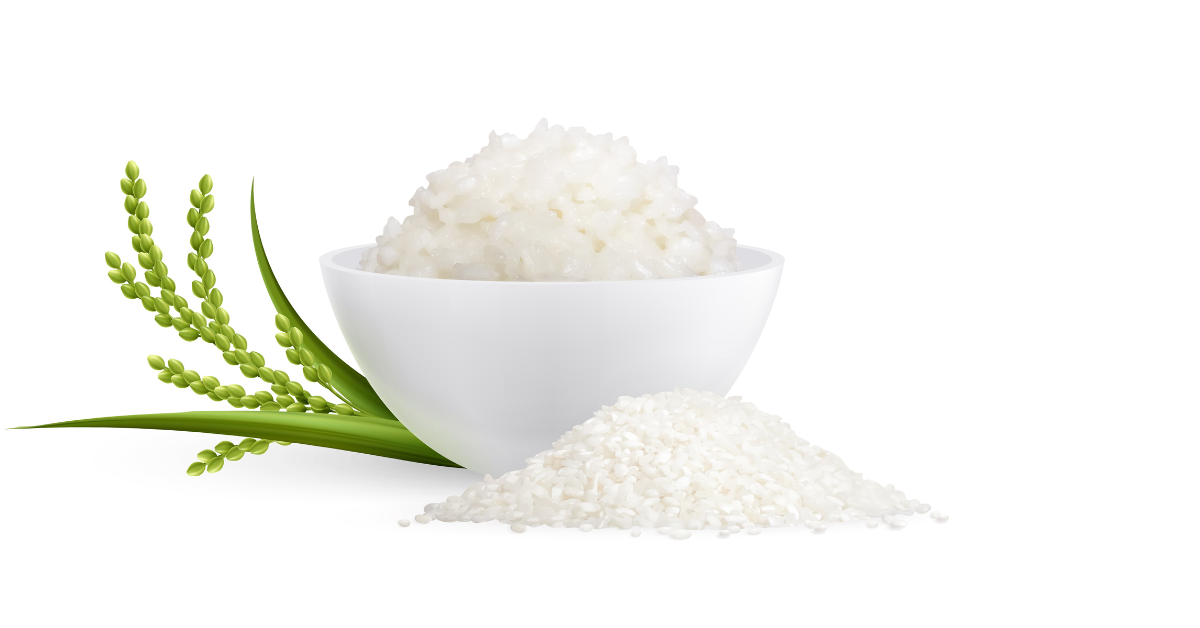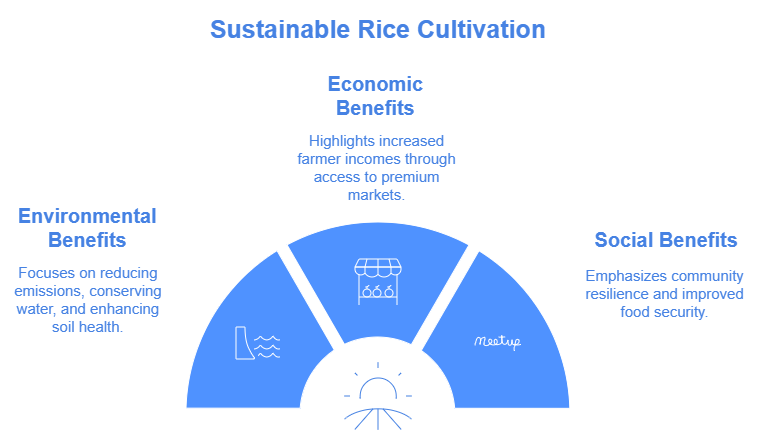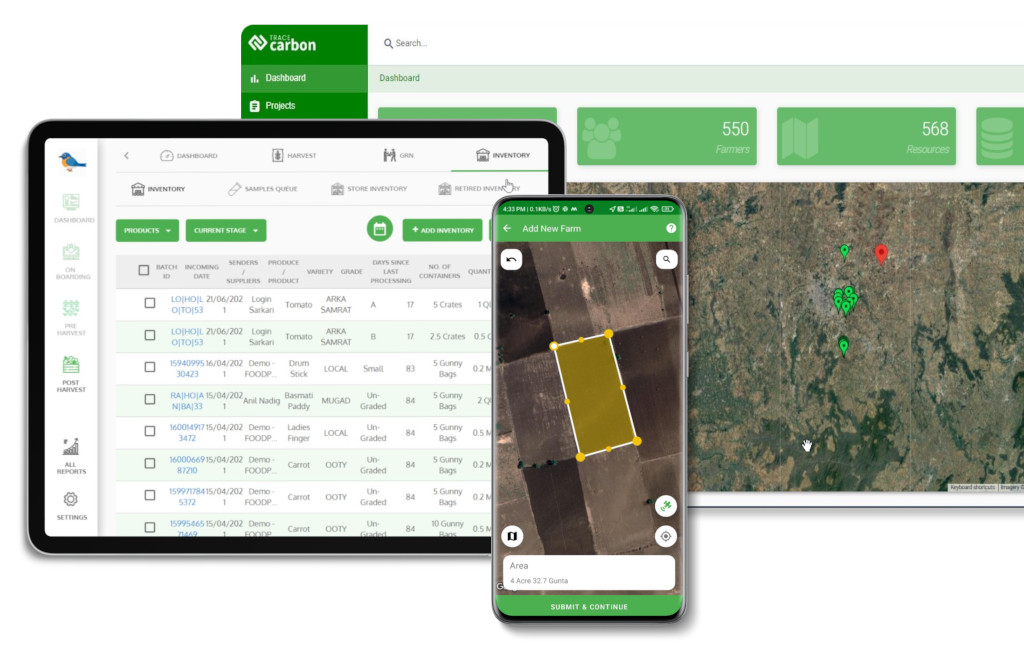Contact: +91 99725 24322 |
Menu
Menu
Quick summary: Discover the Sustainable Rice Platform's role in promoting eco-friendly rice cultivation. Learn how SRP empowers farmers, enhances traceability, and ensures sustainable practices for a greener future.

Do you know that for rice farmers, meeting the Sustainable Rice Platform (SRP) standards is the key to accessing global markets, improving yields, and minimizing environmental impact?
To leverage technology for SRP standards in rice cultivation, integrate data management systems for traceability, ensuring every step from planting to harvest is documented. Utilize precision farming tools like smart irrigation, soil sensors, and drones to optimize water usage and soil health, aligning with Sustainable Rice Platform (SRP) requirements. Automate due diligence and regulatory reporting to meet SRP’s environmental, social, and economic criteria efficiently. These technologies enhance resource management, reduce environmental impact, and ensure continuous compliance, helping rice farmers improve productivity while meeting SRP standards for sustainability and market access.
Achieving these standards without the right tools can feel overwhelming. Farmers are facing increasing pressure to optimize resource usage, ensure traceability, and meet environmental standards, all while maintaining profitability. Without the right technology, managing the complexity of modern rice farming and staying compliant with SRP’s rigorous standards becomes a daunting and resource-intensive task.
Key Takeaways
A leading agribusiness exporter transformed its basmati rice production by adopting TraceX’s sustainability platform. The solution enabled end-to-end traceability, streamlined compliance with sustainability standards, and reduced environmental impacts
The Sustainable Rice Platform (SRP) is a global initiative that’s transforming the way rice is grown. Think of it as a partnership of people and organizations—farmers, governments, research institutions, NGOs, and private companies—all working together to make rice farming more sustainable and beneficial for everyone involved.
At its heart, SRP focuses on promoting sustainable rice cultivation practices that are kinder to the environment while also supporting the livelihoods of the millions of smallholder farmers who depend on rice farming. It addresses big challenges like reducing greenhouse gas emissions, conserving water, and improving market access for farmers, all while ensuring there’s enough rice to feed a growing global population.
Want to learn more about sustainable rice cultivation practices and best practices in sustainable agriculture? Dive into our blogs to explore innovative solutions, eco-friendly methods, and sustainability tips that can transform your farming approach.
Read our blog on Sustainable Rice Cultivation Practices
Discover Best Practices in Sustainable Agriculture
The Sustainable Rice Platform (SRP) aims to revolutionize rice farming globally by setting standards that drive sustainability across multiple facets of the industry. From reducing environmental impact to ensuring social fairness, SRP lays the groundwork for a holistic approach to sustainable rice cultivation. Let’s explore how SRP standards shape modern rice farming, the challenges farmers face, and how technology can support compliance.
The environmental footprint of rice cultivation is a significant concern, particularly regarding water usage and carbon emissions. According to SRP standards, rice farms are expected to drastically reduce water consumption, minimize methane emissions, and enhance soil health for a sustainable future.
SRP’s environmental criteria promote practices such as alternate wetting and drying (AWD), which reduce water use by up to 30% compared to conventional irrigation methods, and crop rotation to improve soil quality.
The traditional rice farming methods often lead to water wastage and soil degradation. SRP challenges this by pushing farmers to adopt efficient water management systems and practices that not only preserve resources but also lead to long-term farm productivity.
SRP isn’t just about environmental standards—it also promotes social and economic sustainability. Fair wages and gender equality are core tenets of SRP, ensuring that workers in rice farming are treated equitably and provided with safe working conditions. SRP also focuses on supply chain transparency, urging businesses to ensure that every step of the production process is ethically managed and that farmers are fairly compensated for their work.
While environmental issues often dominate conversations around sustainability, SRP places equal importance on the social fabric of rice cultivation. This emphasis ensures that rice farmers are not only contributing to global food security but are also benefitting economically. Technology solutions, such as blockchain for transparency and mobile platforms for fair wage tracking, can empower farmers to manage labor practices more efficiently, ensuring they meet SRP’s social and economic standards.
SRP standards emphasize both quality and productivity in rice farming. Farmers are encouraged to implement practices that increase yield while maintaining high product standards. The use of precision agriculture techniques, such as smart irrigation and crop sensors, helps monitor soil moisture, nutrient levels, and overall plant health, optimizing crop production while maintaining quality. SRP-certified farms are also expected to reduce pesticide use and employ eco-friendly pest management strategies.
In today’s market, achieving high yield and quality rice isn’t just about increasing output—it’s about doing so sustainably. Technology enables farmers to fine-tune their practices, allowing them to increase yield without sacrificing quality. By adopting AI-driven tools for pest management, drones for crop monitoring, and data analytics for performance tracking, farmers can meet SRP’s productivity and quality goals more efficiently than ever before.
Despite SRP’s comprehensive standards, many rice farmers face significant hurdles in adopting sustainable practices. Some of the common challenges include:
While the barriers to SRP compliance may seem daunting, technology offers a way forward. By using affordable solutions like mobile apps for field data collection, cloud-based platforms for supply chain management, and online training for sustainable farming techniques, farmers can overcome many of these obstacles. These digital solutions make SRP compliance more accessible, offering tools to manage data, track performance, and ensure that every requirement is met—regardless of farm size.
The Sustainable Rice Platform (SRP) sets the stage for a future where rice farming is both environmentally responsible and economically viable. Technology plays a critical role in helping farmers meet SRP’s stringent standards, improving productivity, social practices, and quality while minimizing environmental impact. By integrating innovative tech solutions, farmers can meet SRP standards with greater ease, positioning themselves as leaders in sustainable rice farming for a global market.

Sustainable Rice Platform (SRP) compliance can be complex and time-consuming, especially when it comes to ensuring traceability, managing data, and meeting documentation requirements. Fortunately, technology solutions are here to streamline the process, tackle real-world challenges, and simplify compliance for rice farmers and producers. Let’s explore how data integration, traceability, and automated reporting are transforming SRP compliance and addressing the pain points that many businesses face.
One of the biggest challenges for rice farmers is ensuring traceability across the entire supply chain. From planting to harvesting, managing the flow of information from multiple sources can be overwhelming. Without a centralized system, it’s easy for farmers to lose track of essential data, such as geolocation, certification information, and environmental impact metrics.
Additionally, as SRP compliance requires full transparency of farming practices, it’s difficult for many farmers to prove they meet sustainability standards without having a clear record of where each material or batch of rice was sourced.
This integration of traceability ensures that farmers can easily prove compliance with SRP’s standards by capturing data at every stage—from the moment the rice is planted to the final product that reaches the market.
Another significant pain point for businesses in SRP compliance is the manual nature of reporting and documentation. With so many metrics to track—such as carbon emissions, water usage, and social impact—the process can become incredibly complex and prone to human error. This not only takes up valuable time but can also result in inaccurate data, potentially putting compliance at risk.
This automation ensures that farmers meet SRP’s documentation requirements efficiently, freeing up valuable time that would otherwise be spent manually compiling information.

The TraceX Sustainability Platform is designed to simplify and enhance compliance with sustainability standards, including the Sustainable Rice Platform (SRP). For organizations involved in rice farming, ensuring alignment with SRP’s rigorous environmental, social, and economic standards can be complex and resource-intensive. However, TraceX’s platform offers a comprehensive, digital solution that addresses the key challenges faced by organizations striving to meet SRP requirements. Here’s how it works:
One of the most crucial SRP standards is traceability, which requires organizations to document and prove the entire journey of rice from planting to harvest, ensuring it meets sustainability criteria. TraceX provides a comprehensive traceability system, tracking every batch of rice through the supply chain.
Real-time data integration is essential for ongoing SRP compliance. With TraceX, organizations can continuously track key sustainability metrics, such as water usage, carbon emissions, and soil health. This data is automatically captured via connected sensors and integrated into the platform, offering:
By offering a live view of farm performance, TraceX enables organizations to stay on top of SRP compliance and make adjustments as needed.
SRP requires organizations to produce detailed documentation and compliance reports for environmental, social, and economic practices. TraceX’s automated reporting tools simplify this process by generating real-time reports that align with SRP’s documentation requirements.
By automating the documentation process, TraceX reduces the administrative burden, ensures accuracy, and helps organizations stay on top of evolving compliance requirements.
SRP is not only about environmental sustainability but also about social responsibility and economic fairness. TraceX helps organizations monitor and report on key social metrics, such as:
With TraceX, organizations can ensure that their rice farming operations meet SRP’s social criteria, improving their reputation as a socially responsible business.
Businesses play a big role in making sustainable rice farming successful.
Businesses can start by sourcing rice that meets SRP’s sustainable standards. Why does this matter? By choosing SRP-certified rice, businesses show they care about the environment, fair practices, and high-quality products. It also encourages more farmers to adopt sustainable methods because they see a growing market for their efforts. For example, food companies can proudly label their products as containing sustainably sourced rice, which appeals to conscious consumers.
Many smallholder farmers want to farm sustainably but lack the tools or resources. This is where businesses can help. By investing in technology, businesses can support solutions like IoT sensors, mobile apps, and blockchain systems that make sustainable farming easier for farmers. For instance, a company could fund the installation of IoT devices to help farmers monitor water and nutrient levels or provide access to digital platforms for tracking crop health. These innovations not only improve farm productivity but also help meet SRP goals, like reducing water use and emissions.
Let’s face it—many consumers don’t know the difference between regular rice and sustainably produced rice. Businesses can help change that. By educating their customers through packaging, ads, and campaigns, they can highlight why SRP-certified rice is better—for the planet, farmers, and their dinner table. For example, a retail brand can launch a campaign like, “Buy Rice That’s Kind to the Planet!”, explaining the benefits of sustainable practices and their impact on reducing water waste and emissions. When consumers value sustainably produced rice, it creates a ripple effect, pushing the entire supply chain toward more eco-friendly practices.
The Sustainable Rice Platform (SRP) is transforming the way rice is cultivated by promoting practices that benefit farmers, the environment, and consumers alike. By encouraging resource-efficient farming, introducing global standards, and leveraging technology, SRP ensures that rice production is more sustainable and resilient to climate change. Through collaborations with businesses, governments, and NGOs, SRP is setting the foundation for a future where rice farming thrives while preserving our planet’s resources. Together, we can support this mission and make sustainably grown rice a global standard.
Interested in learning more about rice traceability, digital solutions for procurement, and AWD rice cultivation?
Dive into our expert blogs to explore how technology can help streamline your farming practices, optimize procurement, and meet sustainability goals.
Read our blog on Rice Traceability
Explore Digital Solutions for Procurement
Learn about AWD Rice Cultivation Practices
The SRP is a global initiative that promotes sustainable farming practices in rice cultivation. It provides standards, resources, and technology to help farmers reduce their environmental impact while improving productivity and income.
SRP supports farmers by offering training on sustainable practices, access to technology like IoT and blockchain, and opportunities to participate in carbon credit programs. This helps farmers grow rice efficiently and gain better market access.
Businesses can support SRP by sourcing SRP-certified rice, investing in technologies for sustainable farming, and creating consumer awareness about the benefits of sustainably produced rice. These efforts encourage widespread adoption of sustainable practices.
